
Ancient Egyptian Hieroglyphics Alphabet, a complicated way for the Egyptians to write, was essential for understanding the rich culture and history of Ancient Egypt. The Egyptian hieroglyphic alphabet, which has many symbols and characters, gives us a fascinating look at the society that grew along the Nile thousands of years ago.
The Ancient Egyptian hieroglyphs alphabet is a fantastic example of how intelligent and creative this ancient society was. Hieroglyphs, whose name comes from the Greek word for “sacred carvings,” were used mainly by the ancient Egyptians to record important parts of their lives, such as religious rituals, historical events, and administrative issues. These Hieroglyphics Alphabet writings were found on temple walls, tombs like the Valley of the Kings, papyrus scrolls, and other objects, giving a unique look into their society.
Why is the Ancient Egyptian language alphabet Important?

We can’t say enough about how essential hieroglyphs are to understanding Ancient Egypt’s society and history. Egyptologists have learned much about this ancient civilization’s beliefs, customs, and successes by figuring out what these complicated symbols mean. Each hieroglyphic character has a lot of meaning, representing sounds, thoughts, and concepts.
Imagine reading the hieroglyphic writing on the walls of old temples or the secrets hidden in the tombs of pharaohs. Studying the ancient Egyptian hieroglyphics alphabet opens the door to a world of wonders and helps us connect with a society that thrived thousands of years ago.
Ancient Egyptians knew they needed a way to write down important things about their society, such as religious views, historical events, administrative issues, and more. They made the ancient Egypt hieroglyphics alphabet to communicate and show themselves, using them in many different ways.
What are the 3 Types of Ancient Egyptian language alphabet?
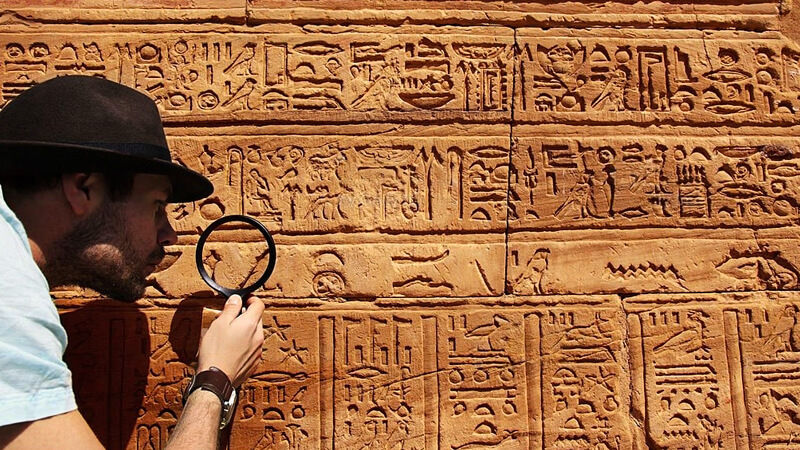
1. Early Forms of Egyptian Writing
The origins of the ancient Egyptian hieroglyphs alphabet can be traced back to the Early Dynastic Period of Ancient Egypt, around 3200 BCE. At this time, hieroglyphs were in their infancy and mainly took the form of pictograms—symbols representing objects or ideas directly. These early pictorial representations gradually evolved, becoming more complex and abstract as the writing system developed.
2. Evolution of Hieroglyphs from Pictograms to Phonetic Symbols
As the ancient Egyptians sought more sophisticated means of expression, hieroglyphs underwent a transformative evolution. The transition from pictograms to phonetic symbols marked a crucial turning point. The Egyptians introduced characters representing specific sounds or combinations of sounds, enabling a more versatile and nuanced form of communication. This revolutionary step allowed for the expressing of a more comprehensive range of concepts and ideas.
3. Role of Scribes in Ancient Egyptian Society
In the realm of hieroglyphic writing, scribes held a revered position in Ancient Egyptian society. They were skilled individuals who underwent rigorous training to acquire the knowledge of reading and writing hieroglyphs. Writers were pivotal in preserving the Egyptian hieroglyphic alphabet and facilitating communication across the empire. They were responsible for recording important events, religious rituals, and administrative matters, ensuring the preservation of knowledge for future generations.
Understanding the Alphabet in Egyptian Hieroglyphics
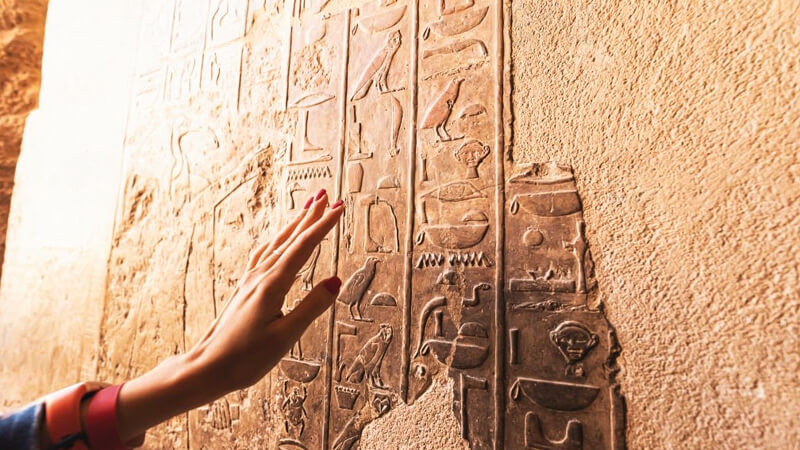
Explanation of the Hieroglyphic Alphabet Structure
The hieroglyphic alphabet consists of diverse symbols, each carrying its unique meaning and function. The design of the alphabet is a fascinating blend of phonetic symbols, ideograms, and determinatives. These elements work together to form a complex system of writing that conveys both sounds and concepts.
Common Hieroglyphic Symbols and Their Meanings
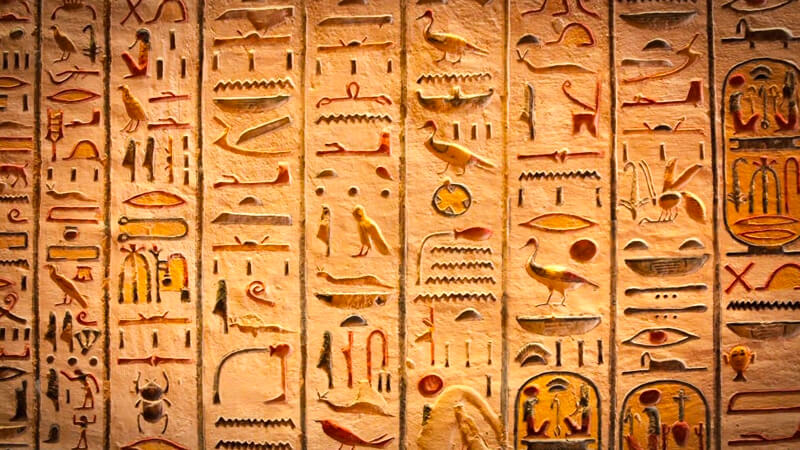
The Egyptian hieroglyphic alphabet encompasses a vast collection of Egyptian symbols, each with its significance. Among these hieroglyphic symbols are phonetic characters representing specific sounds or combinations of sounds. Ideograms, on the other hand, illustrate whole words or concepts, bypassing the need for phonetic interpretation.
1. Phonetic symbols: Phonetic symbols of the alphabet in Egyptian hieroglyphics represent specific sounds or combinations. Here are some commonly used phonetic symbols:
- Reed leaf (𓇋): Represents the “I” sound.
- Owl (𓅓): Signifies the “M” sound.
- Horned viper (𓆑): Represents the “F” sound.
- Arm (𓂝): Signifies the “A” sound.
- Lion (𓃭): Represents the “L” sound.
- Quail chick (𓅱): Signifies the “W” sound.
By recognizing and understanding these phonetic symbols, Egyptologists can decipher the pronunciation of words in hieroglyphic inscriptions.
2. Ideograms: Ideograms are hieroglyphic symbols directly representing whole words or concepts. Here are some common ideograms and their meanings:
- Eye (𓁹): Signifies the word “sight” or “vision.”
- Water ripple (𓈖): Represents the concept of “motion” or “movement.”
- Sun disk (𓇳): Signifies the word “sun” or “day.”
- House (𓉐): Signifies the word “house” or “dwelling.”
- Boat (𓊛): Represents the concept of “journey” or “travel.”
Ideograms allowed scribes to convey ideas and concepts directly in their writing without the need for phonetic interpretation.
3. Determinatives: Determinatives are symbols that provide context and clarification to the accompanying words. They help identify the category or general meaning of a word. Here are some common determinatives and their functions:
- Human figures: Determinatives in the shape of human figures often indicate words related to people, such as individuals, occupations, or social roles. For example, the determinative of a seated person (𓀀) may tell comments about individuals or professions.
- Animals: Determinatives in the form of animals signify words associated with animals or animal-related concepts. For instance, the determinative of a lion (𓃭) might indicate words related to lions, courage, or strength.
- Plants: Determinatives representing various plants typically suggest words related to vegetation, agriculture, or specific plant species. For example, determining a palm tree (𓆳) might indicate terms associated with trees, wood, or palm-related concepts.
- Objects: Determinatives in the shape of things are used to categorize words related to specific items or concepts. For instance, the determinative of a house (𓉐) may indicate words about buildings, homes, or architecture.
- Gods and religious symbols: Determinatives depicting gods or symbols often indicate words with religious or divine connotations. The determinative of a seated god (𓀭) might suggest terms associated with deities or spiritual concepts.
Determinatives play a vital role in hieroglyphic texts by providing visual cues and enhancing the reader’s understanding of the intended meaning. They help distinguish between words with similar phonetic values and provide important context for accurate interpretation.
To read and write hieroglyphic sentences, one must understand the principles of phonetic and semantic interpretation. The ancient Egyptians used a combination of phonetic and ideographic elements in their writing, allowing for a comprehensive representation of language.
Learning the hieroglyphics Alphabet Symbols
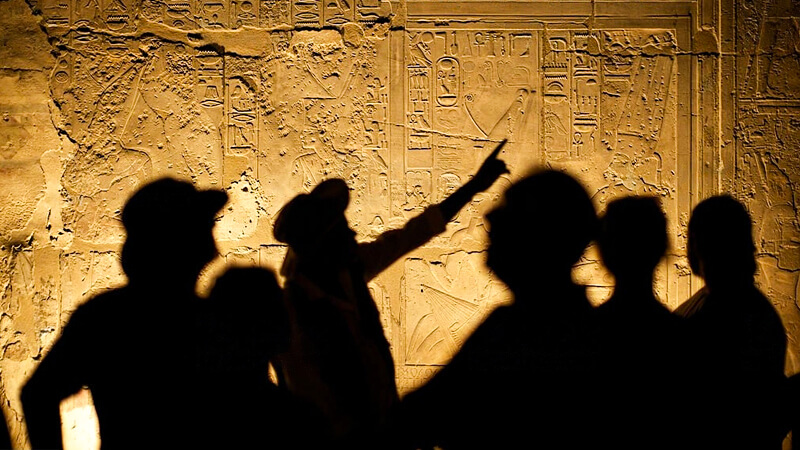
If you want to learn the ancient Egyptian hieroglyphs alphabet, you’ll need the right tools and materials to start your journey to figure out the hieroglyphic alphabet. Luckily, many resources and tools help you with your research. You could use the following:
- Hieroglyphic books: Detailed dictionaries made for the hieroglyphic script are helpful tools. They thoroughly explain what each hieroglyph means and how it is usually used.
- Hieroglyphic textbooks have structured lessons and tasks to help you learn the basics of the script. Look for books written by Egyptologists or other well-known experts in the field.
The Hieroglyphics Alphabet Symbols in the Egyptian Civilization
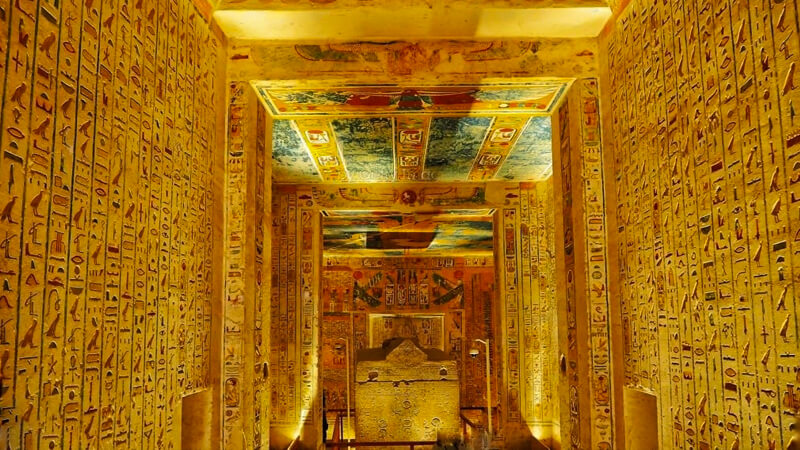
The hieroglyphic alphabet holds immense significance in understanding ancient Egypt. It serves as a key to unlock the mysteries of their culture, history, and religious beliefs. The symbols encapsulate the essence of their civilization, allowing us to glimpse into their daily lives, rituals, and monumental achievements.
The enduring legacy of the ancient Egyptian hieroglyphs alphabet is a testament to the remarkable achievements of this ancient civilization. The hieroglyphics alphabet symbols have stood the test of time, preserving the ancient Egyptians’ stories, beliefs, and knowledge for thousands of years. It continues to captivate and inspire us today, offering a glimpse into a world that existed thousands of years ago.
The study of hieroglyphs has provided invaluable insights into various aspects of ancient Egyptian life, including religion, art, language, history, and societal structure. It has allowed us to unravel the mysteries of their complex religious beliefs, understand the symbolism behind their monumental structures, and delve into the daily lives of the pharaohs and the ordinary people.
Moreover, deciphering hieroglyphs has been a triumph of human intellect and perseverance. From the groundbreaking decipherment of the Rosetta Stone by Jean-François Champollion to the continuous efforts of scholars and Egyptologists, unlocking the hieroglyphic script has opened up a treasure trove of knowledge about ancient Egypt.
Today, the ancient Egyptian hieroglyphs alphabet continues to fascinate and intrigue people from all over the world. They serve as a bridge between the past and the present, connecting us to an ancient civilization that thrived along the banks of the Nile River. Their beauty, complexity, and symbolic power inspire artists, writers, and researchers, ensuring that the legacy of hieroglyphs lives on.
Plan to Visit the Wonders of Ancient Egypt
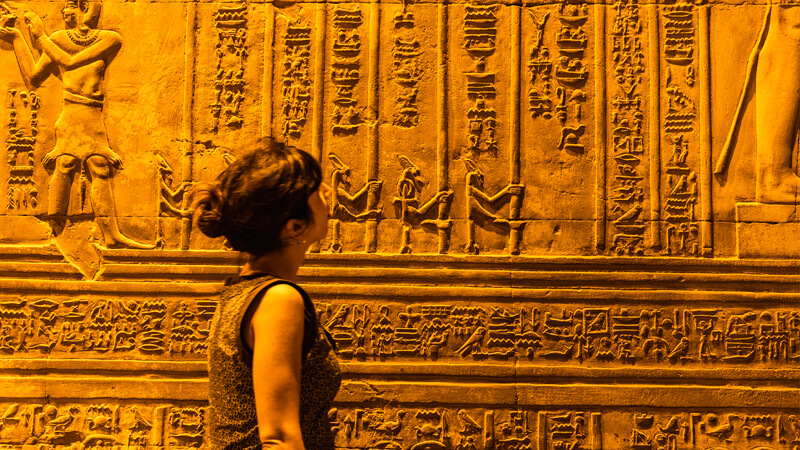
The hieroglyphic alphabet of ancient Egypt is a remarkable testament to human creativity and ingenuity. Its enduring legacy allows us to delve into the depths of an ancient civilization and gain a deeper understanding of our shared human history. Let us continue to explore, appreciate, and preserve the wonders of hieroglyphs, ensuring that future generations can also marvel at the brilliance of Ancient Egyptian culture.
For those planning a visit to Egypt, take the opportunity to immerse yourself in the world of hieroglyphs. Explore the awe-inspiring temples, tombs, and artifacts adorned with hieroglyphic inscriptions. Engage with local guides and Egyptologists who can provide deeper insights into the meanings and stories behind these ancient symbols. Travel Door Tours offers the best All-inclusive Vacations to Egypt, allowing you to discover the wonders of that ancient Egyptian civilization. It will take you to the most beautiful Egypt tourist attractions and awe-inspiring ancient Egyptian temples. Book now, and let the trip begin!




